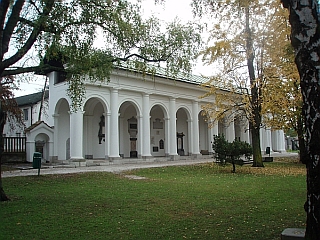
The Navje Memorial Park in Ljubljana was designed to commemorate famous Slovenians. Although it was never completed, it now serves as a memorial to one of the most original creative figures in Slovenian history: Jože Plečnik, the visionary architect who designed it.
The origins of Navje date back to 1779, when a Catholic cemetery was established on the spot. It eventually became Ljubljana’s main cemetery until a new one was set up in 1906.
After World War I, Slovenia became a part of a new South Slavic state and the authorities decided to build a pantheon commemorating famous Slovenians in Navje. They chose Jože Plečnik for the job. The Slovenian architectural superstar had already made a name for himself with his refreshingly original structures in Vienna, Prague, and Ljubljana. In 1936, working together with the modernist architect Ivo Spinčič and landscape architect Anton Lap, Plečnik conceived the park in his distinctive style – and approach that reinterpreted classical elements such as columns and arches in a fresh, innovative way. A large crypt originally planned by Plečnik was rejected by the authorities; instead, famous Slovenians would be memorialized by an outdoor collection of sculptures and headstones.
Work on the park soon got underway, and the headstones of several writers, artists, poets, and scientists were moved to Navje, but the project came to a halt when World War II broke out in 1941. By the time hostilities began, only some of the headstones – including those of the literary historian Matija Čop, the poet Anton Aškerc, the scientist Josef Ressel, the impressionist painter Ivan Grohar, and the polymath Janez Bleiweis -- had been moved to their new location. After the war, Plečnik, who was a deeply religious Catholic, found himself in disfavor with the newly installed Communist regime, and work on the park never resumed.
For years, Navje was badly neglected. In 1955, an old church next to the park was destroyed to make way for an exhibition center, while the park itself was overgrown with weeds.
It wasn’t until Slovenia’s independence that the exiting park was restored, allowing passers-by a glimpse of a vision whose promise was never fully realized.

































































